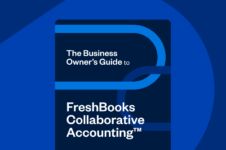When a business requests a W9 form, they use it to ensure they have the correct information to prepare a 1099-NEC form.

Are you an independent contractor or freelancer who just landed your first client?
No doubt you’re excited to get paid, but your new client might just ask you to fill out Form W9, Request for Taxpayer Identification Number and Certification before they pay you. You might be thinking, “fill out a what?”
Before you jump into panic mode, take a step back.
Completing Form W-9 is not nearly as complicated as many other IRS forms or important tax documents.
Let’s take a deeper look at the subject:
- What is a Form W9?
- Why do your clients need it?
- How do you fill it out correctly?
What Is a W9 Form?
To understand Form W9, you first need to know about Form 1099-NEC.
The IRS uses 1099-NEC forms to make sure people properly report their non-employee compensation—i.e., income from freelancing or working as an independent contractor.
When you work as an independent contractor or consultant and provide $600 or more in services to another company, the company is required to report the total amount paid on a 1099-NEC.
To prepare a 1099-NEC, the company needs your name, street address and tax ID number. When the business asks you to provide a W9, they are simply ensuring that they have accurate information for preparing form 1099-NEC.
This income used to be reported on Form 1099-MISC. That form is still used to report some payments, such as rent and royalties.
But the IRS started requiring companies to report non-employee compensation on 1099-NEC in 2021.
How to Complete Form W9
Filling out Form W-9 is simple! Although the form is 6 pages long, 5 of those pages are instructions.
You can probably complete the form in under five minutes.
Here’s what you need to know:
Box 1: Enter your name
Box 2: Enter your business name (if applicable)
Box 3: Check a box to indicate whether you are operating as a sole proprietor, corporation, partnership, or LLC
Box 4: This box is only used if you have an exemption from backup withholding and/or FATCA reporting. Backup withholding occurs when a company withholds 28% of your payment and sends it to the IRS (like an IRS tax form) on your behalf.
Most likely, backup withholding will not apply unless you refuse to provide a Social Security number (SSN) or tax identification number (TIN), provide incorrect information, or have unpaid tax debts and the IRS notified you that you are subject to backup withholding.
FATCA reporting applies only to U.S. taxpayers who hold foreign financial assets worth at least $50,000.
If either of these situations applies to you, consult your tax professional. Otherwise, just enter N/A on these lines.
Box 5 and 6: Enter your mailing address
Box 7: Enter your account number (if applicable)
The next section of the W9 is where you provide your SSN or TIN. If you set your business up as a partnership, LLC or corporation, you should already have a TIN, also referred to as an Employer Identification Number (EIN).
If you are operating as a sole proprietor, you may use your SSN.
However, many sole proprietors and independent contractors prefer not to give out their SSNs for security reasons. The good news is, there is a simple way to avoid that.
You can apply online for an EIN. It’s free, the application process takes just a couple minutes, and you’ll receive your ID number the same day.
Finally, you’ll sign and date in Part II of Form W9, certifying that the information you provided on the form is correct.
If you’ll be working with several clients, it’s likely that each one of them will request a W9. You do not need to complete a new W-9 for every client.
Just keep a copy of the completed form on hand, and it will be ready to go in seconds if a new client asks for one.
If you work with several clients, it’s likely that each one will request a W9.
When You Shouldn’t Fill Out a W9
Since Form W9 includes sensitive information (like a social security number), you should not fill one out unless you know who is requesting it and why they need it.
You should also question completing a W-9 if you start a new job and your employer asks you to complete one.
This could be an indication that the company intends to pay you as an independent contractor rather than an employee, and won’t be withholding income or payroll taxes from your wages. This will become a problem for you come tax time when you’re providing your tax information.
Therefore, it’s important to note that employees should fill out Form W-4, not Form W-9.
Do You Need to Update Your W-9?
You should update your W-9 if your information changes.
For instance, if you change your name or address. You should also update your W-9 if you change the structure of your business and your EIN or business name is different.
In that case, you can download a W-9 from the IRS website, fill it out, and send it to your clients.
Do You Need to Request Form W-9?
If you hire independent contractors to work for you, it’s a good idea to have them fill out a W-9 before you pay them. Just download the form from the IRS website and ask them to complete and sign.
You do not need to file Form W-9 with the IRS. Just keep it with your records and use it to prepare a 1099-NEC for any individual or business to which you paid $600 or more by cash or check during the year.
What happens if you didn’t ask a contractor to provide a W-9, you paid them $600 or more during the year, and they refuse to complete a W-9 or provide their SSN or EIN?
In that case, you should document your repeated requests for the contractor’s TIN. Then you should still fill out and file a 1099-NEC with a notation that the contractor refused to provide a TIN.
You could be penalized for failing to include the required information on the 1099, but you may be able to get the penalty waived if you can prove that you made several attempts to obtain a TIN from the contractor.
If you make any future payments to the contractor, you should immediately begin backup withholding at a rate of 28% and remit this amount to the IRS.
Whatever your business model, getting paid is important. To get paid, you’ll probably have to provide Form W-9.
Now that you know what the form is and how to complete it, completing Form W-9 should be no big deal.
Once you provide a Form W-9 to your clients, you can get back to making money and that’s what business is all about.
This post was updated in November 2023.

Written by Janet Berry-Johnson, CPA and Freelance Contributor
Posted on August 31, 2017
 U.S. Tax: What Is an IRS 1099-NEC Form?
U.S. Tax: What Is an IRS 1099-NEC Form? Top Traits for Your Tax Professional and How to Find a Good Accountant
Top Traits for Your Tax Professional and How to Find a Good Accountant Your Complete Guide to 2023 U.S. Small Business Tax Credits
Your Complete Guide to 2023 U.S. Small Business Tax Credits




